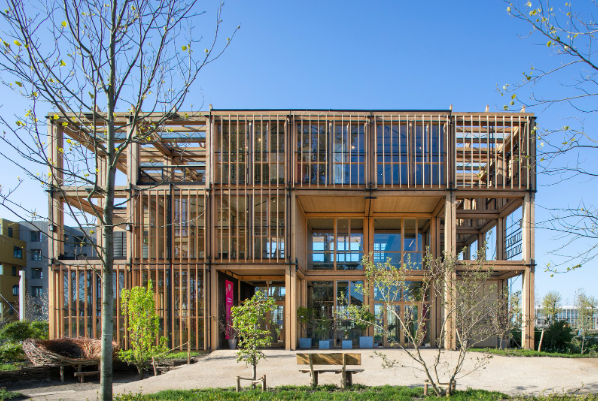The Florida Horticultural Exhibition 2022 became the topic of many marvels and wonders with its innovative and bio-based exhibits. And one such marvel was the pavilion created by DP6 Architectuurstudio.
The exhibition held in Almere, Netherlands housed the pavilion built for the Dutch Government’s entry to the exhibition. Modern problems require innovative solutions. And the pavilion’s minimal and bio-based concept is aimed at demonstrating the exemplary use of natural materials in contemporary construction.
Sustainable and environment-friendly structures are the need of the hour and the Delft firm DP6 took the responsibility in its hands when deciding to build the pavilion using only bio-green elements. And the Dutch Government was proud as punch to claim it as its own pavilion to showcase the wide variety of sustainable building concepts they wish to introduce.

This once-a-decade event is much looked forward to and the Dutch Government’s ‘The Natural Pavilion’ made its entry in response to the 2022 expo’s theme – Growing Green Cities.
The bio-building directs its focus toward the housing shortage issue the Netherlands is facing and incorporates the need of throwing adaptability into the mix so as to create buildings that help restore biodiversity and are kinder to the environment. It may take a while to get there but with such innovations aimed at climate protection and preservation, society can easily manage the transition to more sustainable energy and materials production.
“[It] demonstrates how circular, bio-based and energy neutral housing, schools, and offices can rapidly be developed on an industrial scale, incorporating a wide variety of green elements.”

Built using indigenous, locally sourced wooden beams and recycled-steel joins, the pavilion combines sustainability with technology quite efficiently. Not to mention its simple yet aesthetic structure allows for maximum sunlight to enter the structure.
DP6 did recycling the best when they created windows out of reused glass sourced from a government building in The Hague, a city in the Netherlands. That move alone showcases the possibilities that have been rendered to waste due to mismanagement and a lack of awareness. Moreover, the pavilion’s grid frame offers excellent support to various biologically sourced materials.
“The environmental impact of the pavilion is kept to a minimum through the combination of bio-based and reusable materials, maximal reduction of resource-use, a light foundation of wooden piles, and integration of green elements into the building,” the architects added.
From bio-based flooring to prefabricated elements that, as sources report, can easily be stacked up to 80 meters, the system created by DP6 Architectuurstudio seems to be winning in all areas. Its affordability and easy transportability is another factor that won the acclaim of most who attended the exhibition.

Another massive impact that the construction method employed by DP6 has on the environment is the considerable reduction in CO2 emissions. This is mostly because of the large quantity of recycled and bio-based materials used in construction.
Not only that, but the pavilion also responds to the 2022 exhibition theme by keeping artificial heating and/or cooling to a minimum, which helps maintain an agreeable environment inside the building without disturbing its core purpose.
The indigenous use of agriculture and horticulture materials such as straw, flax, paprika stems, and spinach seeds for building the internal walls of the pavilion left people awestruck. Of course, it’s mindblowing how such a solid and impressive structure could have been made with these materials.
All in all, the Dutch pavilion wins the exhibition with its integrated planting, the bio-based innovative technology, the inclusion of solar panels to provide energy for the pavilion, and the care taken to create a rainwater harvesting system.


